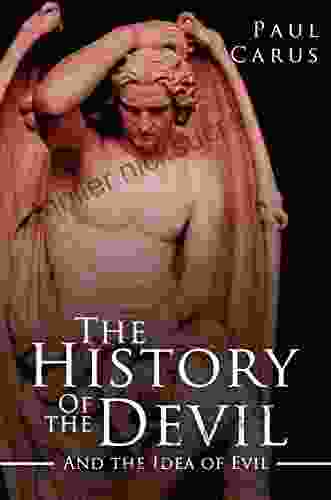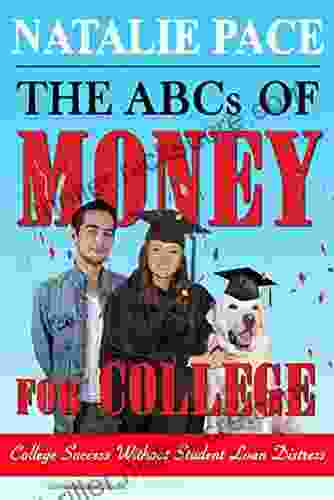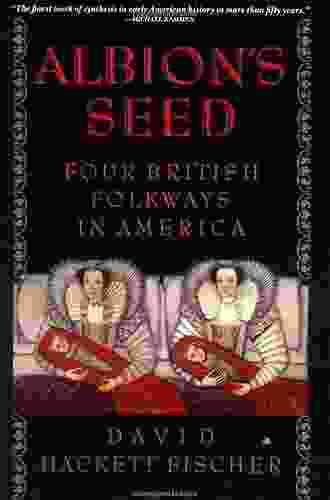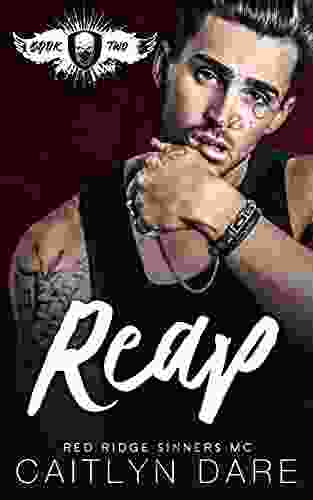The Enchanting Evolution of Theater: From Ancient Rituals to Modern Masterpieces

Immerse yourself in the captivating allure of theater, an art form that has captivated audiences for millennia. From its humble beginnings in ancient rituals to the grandeur of modern masterpieces, theater has been an integral thread woven into the tapestry of human culture.
The Dawn of Drama: Ritualistic Roots and Sacred Performances
The earliest manifestations of theater can be traced back to primitive rituals and religious ceremonies. In prehistoric societies, people gathered around campfires, enacting scenes from their daily lives, hunting expeditions, and spiritual beliefs. These performances held immense significance, believed to connect the human realm with the divine.
4.4 out of 5
| Language | : | English |
| File size | : | 1430 KB |
| Text-to-Speech | : | Enabled |
| Screen Reader | : | Supported |
| Enhanced typesetting | : | Enabled |
| X-Ray | : | Enabled |
| Word Wise | : | Enabled |
| Print length | : | 249 pages |
As civilizations flourished, so too did the theatrical arts. In ancient Egypt, priests performed elaborate ceremonies honoring their deities, using elaborate costumes, masks, and rhythmic movements. Similarly, in ancient Greece, theater emerged as a sacred art, deeply intertwined with religious festivals honoring Dionysus, the god of wine and ecstasy.
Greek Theater: The Birth of Dramatic Structure
Ancient Greek theater witnessed the birth of formal dramatic structure. Playwrights such as Aeschylus, Sophocles, and Euripides crafted poignant tragedies that explored human suffering, fate, and the clash between gods and mortals. They established the conventions of plot, character, and dialogue that would become the cornerstone of Western theater.
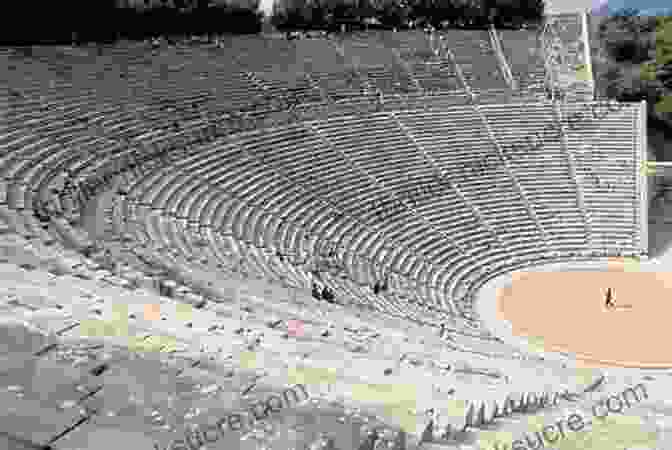
The Athenian theater festival, known as the City Dionysia, was a grand affair. The performances were held in massive open-air amphitheaters, adorned with exquisite sculptures and elaborate stage machinery. Theater was not merely a form of entertainment but a civic ritual, where citizens engaged in collective reflection and celebrated their shared cultural heritage.
Roman Theater: Spectacle and Entertainment
The Romans adopted Greek theater traditions but tailored them to their own cultural tastes. Roman theaters were even grander in scale, accommodating thousands of spectators. Gladiatorial contests, chariot races, and other spectacles became popular forms of entertainment, alongside more traditional theatrical performances.
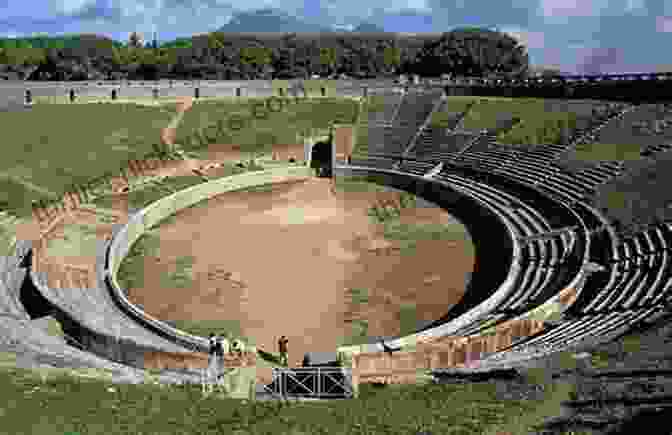
The Roman playwright Plautus wrote farces and comedies that poked fun at human folly and everyday life. Seneca wrote tragedies that explored philosophical concepts and the darker aspects of human nature. The Roman theater catered to a wide range of tastes, from the plebeian masses to the elite classes.
Medieval Theater: Mystery and Miracle Plays
During the Middle Ages, theater took on a religious character. Christianity had become the dominant force in Europe, and the Church used theater as a means of teaching biblical stories and morality lessons. Mystery and miracle plays were popular, depicting scenes from the Bible, the lives of saints, and theological doctrines.
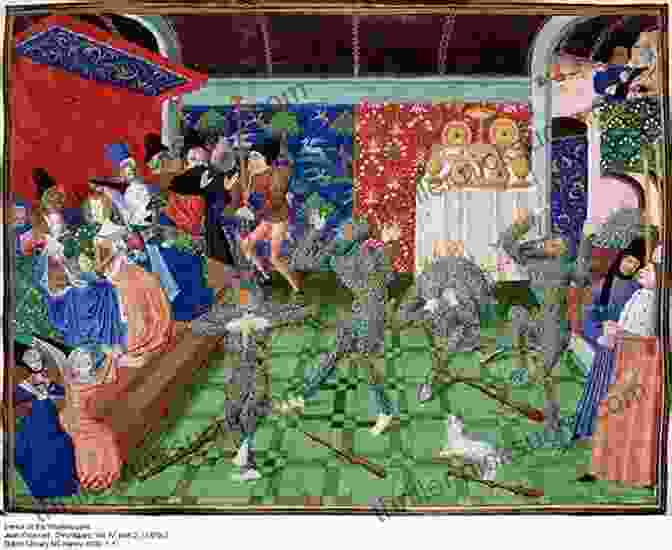
These plays were often performed by traveling actors known as troubadours. They used elaborate costumes, props, and music to engage audiences. Mystery and miracle plays provided a powerful means of connecting with the illiterate masses and reinforcing the Church's teachings.
Renaissance Theater: Rebirth and Humanism
The Renaissance period witnessed a revival of interest in classical Greek and Roman theater. Humanism, a philosophical movement that emphasized the importance of the human individual, found expression in the theatrical arts. Playwrights such as William Shakespeare in England and Molière in France wrote plays that celebrated human nature, explored complex emotions, and satirized societal norms.
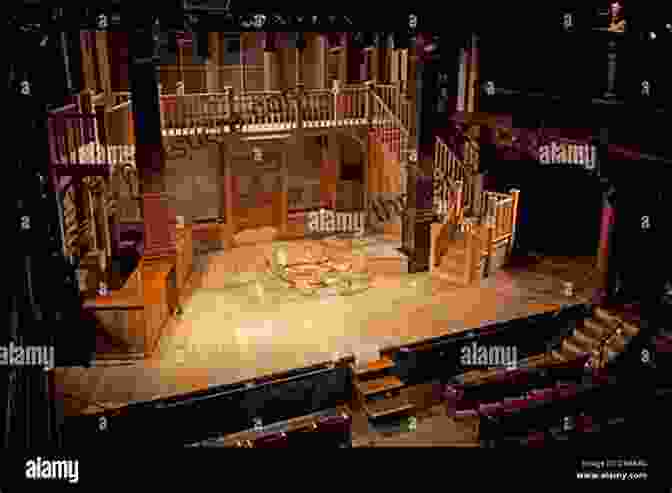
Shakespeare's plays are renowned for their universal themes, poetic language, and compelling characters. He combined elements of comedy, tragedy, and history to create masterpieces that have endured the centuries. Molière's comedies, on the other hand, were known for their sharp wit, social satire, and portrayal of human foibles.
Modern Theater: Breaking Boundaries and Reflecting Society
The 19th and 20th centuries saw a proliferation of theatrical styles and movements. Realism, naturalism, and expressionism emerged as major forces, challenging traditional conventions and reflecting the changing social and cultural landscape.
Playwrights such as Henrik Ibsen in Norway and Anton Chekhov in Russia wrote plays that focused on the inner lives of ordinary individuals, exploring the complexities of human relationships, social injustice, and the search for meaning.
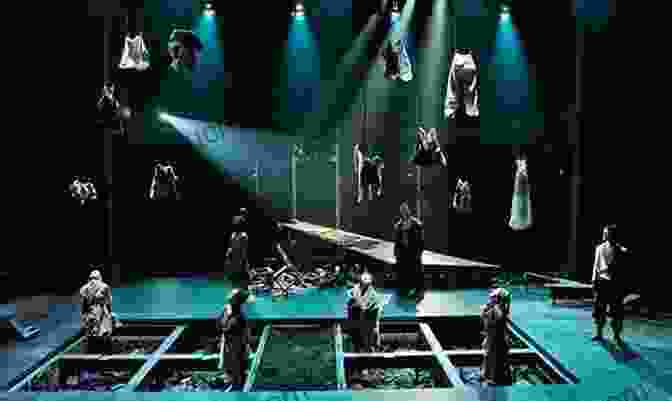
In the 20th century, theater became increasingly experimental. Absurdist playwrights, such as Samuel Beckett and Eugène Ionesco, challenged traditional notions of plot and character, presenting fragmented and dreamlike experiences that reflected the existential angst of the modern world.
Contemporary theater continues to push boundaries, embracing new technologies, diverse perspectives, and global influences. Theater has become a vibrant and multifaceted art form, engaging audiences with its ability to reflect society, provoke thought, and transport us to other worlds.
From its ancient ritualistic origins to its modern-day manifestations, theater has evolved in remarkable ways, mirroring the changing needs and aspirations of human civilization. It has served as a vehicle for cultural expression, a means of religious devotion, a source of entertainment, a platform for social critique, and a catalyst for personal reflection.
As we continue to explore the enchanting world of theater, let us appreciate its enduring legacy and its boundless capacity to captivate, inspire, and challenge us.
4.4 out of 5
| Language | : | English |
| File size | : | 1430 KB |
| Text-to-Speech | : | Enabled |
| Screen Reader | : | Supported |
| Enhanced typesetting | : | Enabled |
| X-Ray | : | Enabled |
| Word Wise | : | Enabled |
| Print length | : | 249 pages |
Do you want to contribute by writing guest posts on this blog?
Please contact us and send us a resume of previous articles that you have written.
 Fiction
Fiction Non Fiction
Non Fiction Romance
Romance Mystery
Mystery Thriller
Thriller SciFi
SciFi Fantasy
Fantasy Horror
Horror Biography
Biography Selfhelp
Selfhelp Business
Business History
History Classics
Classics Poetry
Poetry Childrens
Childrens Young Adult
Young Adult Educational
Educational Cooking
Cooking Travel
Travel Lifestyle
Lifestyle Spirituality
Spirituality Health
Health Fitness
Fitness Technology
Technology Science
Science Arts
Arts Crafts
Crafts DIY
DIY Gardening
Gardening Petcare
Petcare Carol Newell
Carol Newell Soong Chan Rah
Soong Chan Rah Marc J Reilly
Marc J Reilly Maurice Herzog
Maurice Herzog Ivan Savov
Ivan Savov Kicki Hansard
Kicki Hansard Nicholas S Howe
Nicholas S Howe Samantha Michaels
Samantha Michaels Bobbi Conner
Bobbi Conner Guy P Harrison
Guy P Harrison Carol Kaesuk Yoon
Carol Kaesuk Yoon Joan Nathan
Joan Nathan Mark Seemann
Mark Seemann Murray Shukyn
Murray Shukyn Eduardo Montano
Eduardo Montano Ksenia K
Ksenia K P A Johnson
P A Johnson Jacob Boehme
Jacob Boehme Dr Nanhee Byrnes
Dr Nanhee Byrnes Avery Faigenbaum
Avery Faigenbaum Kate Mcmillan
Kate Mcmillan Steven Cross
Steven Cross Dave Cutcher
Dave Cutcher Clayton King
Clayton King Charles Todd
Charles Todd Dr Faith G Harper
Dr Faith G Harper Sara Elliott Price
Sara Elliott Price Jacques Vallee
Jacques Vallee Catherine Shainberg
Catherine Shainberg Rachel Love Nuwer
Rachel Love Nuwer Luis Preto
Luis Preto Ted Franklin Belue
Ted Franklin Belue Kaylene Yoder
Kaylene Yoder Molly Caldwell Crosby
Molly Caldwell Crosby Lisa Druxman
Lisa Druxman Michael Masters
Michael Masters Samuel Arbesman
Samuel Arbesman Jackie Freeman
Jackie Freeman Htebooks
Htebooks Sandra M Nettina
Sandra M Nettina Joanna Faber
Joanna Faber Ethan Bezos
Ethan Bezos John M Taylor
John M Taylor Karl F Kuhn
Karl F Kuhn Nicholas Bjorn
Nicholas Bjorn Elizabeth Dupart
Elizabeth Dupart Tom Cunliffe
Tom Cunliffe G E R Lloyd
G E R Lloyd David Levithan
David Levithan Breanna Hayse
Breanna Hayse Lucy Hopping
Lucy Hopping Arthur Scott Bailey
Arthur Scott Bailey Sujit Sivasundaram
Sujit Sivasundaram Robin Dunbar
Robin Dunbar Emil Frlez
Emil Frlez James A Whittaker
James A Whittaker Rich Osthoff
Rich Osthoff Lana Peek
Lana Peek Mike Eastman
Mike Eastman Robert Ullman
Robert Ullman Kira Breed Wrisley
Kira Breed Wrisley Joanne M Flood
Joanne M Flood Joel Ingersoll
Joel Ingersoll Jennifer Block
Jennifer Block Dusan Petkovic
Dusan Petkovic Jim White
Jim White Ronald M Rapee
Ronald M Rapee John D Couch
John D Couch Samuel Greenberg
Samuel Greenberg Florence Weiser
Florence Weiser Jeremy Bradstreet
Jeremy Bradstreet Jennifer Comeaux
Jennifer Comeaux O S Hawkins
O S Hawkins Dr Lena Edwards
Dr Lena Edwards Jd Tanner
Jd Tanner Brian Kilmeade
Brian Kilmeade Maria Sharapova
Maria Sharapova Damien Cox
Damien Cox Ursula Hackett
Ursula Hackett Wilborn Hampton
Wilborn Hampton Alex Horne
Alex Horne Julie Cangialosi
Julie Cangialosi Megan Whalen Turner
Megan Whalen Turner Garrett Redfield
Garrett Redfield Rachel Mcgrath
Rachel Mcgrath Gerald L Schroeder
Gerald L Schroeder Dawna Markova
Dawna Markova Lisa Leake
Lisa Leake Brian Herne
Brian Herne Keith Ammann
Keith Ammann Jeanne Ellis Ormrod
Jeanne Ellis Ormrod John Cooper
John Cooper Peggy Tharpe
Peggy Tharpe Warren Hansen
Warren Hansen Smart Edition
Smart Edition James Floyd Kelly
James Floyd Kelly Steven Emanuel
Steven Emanuel Mary Morrison
Mary Morrison Roman Gurbanov
Roman Gurbanov David Mcclung
David Mcclung Collins O Onwe
Collins O Onwe James Dean
James Dean Frederick L Coolidge
Frederick L Coolidge Kevin Alexander
Kevin Alexander John Moren
John Moren Scott Jurek
Scott Jurek Patrick Carnes
Patrick Carnes Pastor Ahyh
Pastor Ahyh Richard Post
Richard Post Kalynn Bayron
Kalynn Bayron Cassandra Overby
Cassandra Overby J R Mathews
J R Mathews Chase Hassen
Chase Hassen Lenore Skenazy
Lenore Skenazy Zigzag English
Zigzag English David Flanagan
David Flanagan Kathleen Bartholomew
Kathleen Bartholomew Brittany Cavallaro
Brittany Cavallaro Ron Lieber
Ron Lieber Peter Allison
Peter Allison Nancy Boyd Franklin
Nancy Boyd Franklin Thao Te
Thao Te Karen Ward Mahar
Karen Ward Mahar Vincent W Davis
Vincent W Davis Richard Blais
Richard Blais Steve Bromley
Steve Bromley David Sinclair
David Sinclair Lucia Guglielminetti
Lucia Guglielminetti Janae M Robinson
Janae M Robinson J R Harris
J R Harris Peter Zuckerman
Peter Zuckerman Daniel Dell Uomo
Daniel Dell Uomo Michael Mason
Michael Mason Eric R Dodge
Eric R Dodge Douglas R Hofstadter
Douglas R Hofstadter Inge Bell
Inge Bell Elwyn Hartley Edwards
Elwyn Hartley Edwards Marco Polo
Marco Polo Chukwuma Eleodimuo
Chukwuma Eleodimuo David M Ewalt
David M Ewalt Carol Walters
Carol Walters Elsevier
Elsevier John Monaghan
John Monaghan Sarah Kleck
Sarah Kleck Jonathan Grix
Jonathan Grix Debra Fine
Debra Fine Rich Cohen
Rich Cohen D Enette Larson Meyer
D Enette Larson Meyer Mahmood Mamdani
Mahmood Mamdani Shayla Black
Shayla Black William Souder
William Souder Kazumi Tabata
Kazumi Tabata Bryan Berard
Bryan Berard Don Brown
Don Brown Jason Brick
Jason Brick Eric Michael
Eric Michael Steven Hugg
Steven Hugg Kevin Marx
Kevin Marx Harold Gatty
Harold Gatty Mary Heffernan
Mary Heffernan Ji Kim
Ji Kim Steven Trustrum
Steven Trustrum Michel Odent
Michel Odent Stephanie Sarkis
Stephanie Sarkis St Teresa Of Avila
St Teresa Of Avila Cal Pater
Cal Pater Matt Doeden
Matt Doeden Mark Powell
Mark Powell E G Richards
E G Richards Grete Waitz
Grete Waitz Michael Omi
Michael Omi Dan Fullerton
Dan Fullerton Calvin Trillin
Calvin Trillin Carlo Zen
Carlo Zen Mitt Romney
Mitt Romney Jane Albert
Jane Albert Tom M Apostol
Tom M Apostol Richard Kasper
Richard Kasper Steven W Vannoy
Steven W Vannoy Nehemia Gordon
Nehemia Gordon Stuart Woods
Stuart Woods Michael Sean Comerford
Michael Sean Comerford Karen E Mcconnell
Karen E Mcconnell Jeanne Flavin
Jeanne Flavin Nora Roberts
Nora Roberts Keith Foskett
Keith Foskett D S Malik
D S Malik Neil Postman
Neil Postman Meg Cabot
Meg Cabot David Murray
David Murray Jeannie Burlowski
Jeannie Burlowski Juliet Miller
Juliet Miller Steve Schwartz
Steve Schwartz James Kaiser
James Kaiser Gabriel F Federico
Gabriel F Federico David Hoffman
David Hoffman Steve Williams
Steve Williams Joyce Bas
Joyce Bas Masaaki Kijima
Masaaki Kijima Joe Grant
Joe Grant Ann Imig
Ann Imig Rob Collins
Rob Collins Sean Michael Wilson
Sean Michael Wilson Joyce Harper
Joyce Harper Marguerite Henry
Marguerite Henry James M Jones
James M Jones Miguel Crespo
Miguel Crespo John Mclachlan
John Mclachlan Jessica Minahan
Jessica Minahan Heyward Coleman
Heyward Coleman Grace Friedman
Grace Friedman Bonnie Henderson
Bonnie Henderson Denise Long
Denise Long Kathleen Taylor
Kathleen Taylor Claudia Gray
Claudia Gray S Connolly
S Connolly Kent Hoffman
Kent Hoffman Dan Washburn
Dan Washburn Maggie Dallen
Maggie Dallen Jp Kriya
Jp Kriya Melissa Trevathan
Melissa Trevathan Melinda Tankard Reist
Melinda Tankard Reist J F James
J F James Rick J Scavetta
Rick J Scavetta Mark J Ferrari
Mark J Ferrari Brian Reddington
Brian Reddington Khalid Khashoggi
Khalid Khashoggi Phillip Stephen Schulz
Phillip Stephen Schulz James D Tabor
James D Tabor Harry Vardon
Harry Vardon Gjoko Muratovski
Gjoko Muratovski Richard Bass
Richard Bass Mitchel P Roth
Mitchel P Roth Adrienne Onofri
Adrienne Onofri Dr Monique Thompson Dha Lpc
Dr Monique Thompson Dha Lpc Brett Stewart
Brett Stewart Ryan M Cleckner
Ryan M Cleckner Nibedit Dey
Nibedit Dey Heather Rose
Heather Rose Penny Alexander
Penny Alexander James Miller
James Miller Nachole Johnson
Nachole Johnson Mark Howard
Mark Howard Gerald R Allen
Gerald R Allen Lisa Scottoline
Lisa Scottoline Tobe Melora Correal
Tobe Melora Correal Stephen Hawking
Stephen Hawking Christopher Clarey
Christopher Clarey Jacqueline Houtman
Jacqueline Houtman Cecilia Twinch
Cecilia Twinch John Major Jenkins
John Major Jenkins James Zug
James Zug Wil Fleming
Wil Fleming Matt Parker
Matt Parker Stephanie Perkins
Stephanie Perkins Jodi Aman
Jodi Aman Roshani Chokshi
Roshani Chokshi Inger Mewburn
Inger Mewburn Susan F Paterno
Susan F Paterno Christopher Ketcham
Christopher Ketcham Thomas A Jacobs
Thomas A Jacobs Hiram Bingham
Hiram Bingham Loan Le
Loan Le John Fraser Hart
John Fraser Hart John A Fortunato
John A Fortunato Jules Wake
Jules Wake Matt Davids
Matt Davids Roach Mary
Roach Mary William Shakespeare
William Shakespeare Scott Haines
Scott Haines Rory D Nelson
Rory D Nelson Sam Sorbo
Sam Sorbo Laurie A Watkins
Laurie A Watkins Deepak Chopra
Deepak Chopra Mohammad F Anwar
Mohammad F Anwar Kate S Martin
Kate S Martin Brogan Steele
Brogan Steele Jackson T Markbrown
Jackson T Markbrown Bruce A Fenderson
Bruce A Fenderson Harry Bauld
Harry Bauld Eric C Lindstrom
Eric C Lindstrom Estelle Dautry
Estelle Dautry Dr Alison Dibarto Goggin
Dr Alison Dibarto Goggin Linda Carter
Linda Carter Brienne Murk
Brienne Murk Bernard Darwin
Bernard Darwin Karen Wilkinson
Karen Wilkinson Celina Grace
Celina Grace Martin Wells
Martin Wells Bruce Macdonald
Bruce Macdonald Brion Toss
Brion Toss Cecelia Ahern
Cecelia Ahern Tim Dunn
Tim Dunn Seb Falk
Seb Falk Erin Mckittrick
Erin Mckittrick Charlie Francis
Charlie Francis Brian R King
Brian R King Luis Angel Echeverria
Luis Angel Echeverria Michael Ruhlman
Michael Ruhlman Dinesh Kumar Goyal
Dinesh Kumar Goyal Gerson S Sher
Gerson S Sher Emily Lauren Dick
Emily Lauren Dick Kelle James
Kelle James Jaime Flowers
Jaime Flowers Shannon Warden
Shannon Warden Deborah Shouse
Deborah Shouse David Hatcher Childress
David Hatcher Childress Colleen Craig
Colleen Craig Phyllis Books
Phyllis Books Matt Morton
Matt Morton Nathan Halberstadt
Nathan Halberstadt Rosalyn Sheehy
Rosalyn Sheehy Jonathan H Turner
Jonathan H Turner Helen Zee
Helen Zee Milne Cc Pocock
Milne Cc Pocock Ian Tuhovsky
Ian Tuhovsky Kenneth Paul Rosenberg
Kenneth Paul Rosenberg Tyler Hamilton
Tyler Hamilton Cpt Exam Prep Team
Cpt Exam Prep Team John Mcenroe
John Mcenroe Fritjof Capra
Fritjof Capra Charles Wilson
Charles Wilson Derek Blasberg
Derek Blasberg Joanna Sayago Golub
Joanna Sayago Golub Santari Green
Santari Green Brian Noyes
Brian Noyes Varg Freeborn
Varg Freeborn Malcolm Hebron
Malcolm Hebron Manfred Theisen
Manfred Theisen Sandy Jones
Sandy Jones Sriman Sharma
Sriman Sharma D Levesque
D Levesque Mariana Monteiro
Mariana Monteiro Paula Span
Paula Span Stephen Wood
Stephen Wood Rahul Jandial
Rahul Jandial Colleen Doyle Bryant
Colleen Doyle Bryant Kindle Edition
Kindle Edition Paul Carus
Paul Carus Larry A Yff
Larry A Yff Michael Sullivan Iii
Michael Sullivan Iii J C Cervantes
J C Cervantes Paula Brackston
Paula Brackston Pat Manocchia
Pat Manocchia Kyle Rohrig
Kyle Rohrig Cindy Margolis
Cindy Margolis Adam Night
Adam Night Thomas Malory
Thomas Malory Genie Reads
Genie Reads Chuck Callaway
Chuck Callaway Dan Jones
Dan Jones Natalia Ilyin
Natalia Ilyin Danny Staple
Danny Staple Daniel Bergner
Daniel Bergner Caitlyn Dare
Caitlyn Dare Jhenah Telyndru
Jhenah Telyndru Brian W Kernighan
Brian W Kernighan Brian Everitt
Brian Everitt Bret Stetka
Bret Stetka Judith A Owens
Judith A Owens David Barrett
David Barrett Nate Allen
Nate Allen David Cannon
David Cannon Christine Brennan
Christine Brennan Richard Hingley
Richard Hingley Terence Tao
Terence Tao Sara Gaviria
Sara Gaviria Loyd Ellis
Loyd Ellis John Wesson
John Wesson Mary Strand
Mary Strand Claudia M Gold
Claudia M Gold Martin A Lee
Martin A Lee Patricia Wooster
Patricia Wooster Elliot Davis
Elliot Davis Lucas Chancel
Lucas Chancel John Bradshaw
John Bradshaw Patty Wipfler
Patty Wipfler Joseph Burbridge
Joseph Burbridge Keith Ryan Cartwright
Keith Ryan Cartwright Doug Peacock
Doug Peacock Kusha Karvandi
Kusha Karvandi Krishna Godhania
Krishna Godhania David Hackett Fischer
David Hackett Fischer Worth Books
Worth Books Douglas Wood
Douglas Wood Edith Hall
Edith Hall Lukas M Verburgt
Lukas M Verburgt Kerry Mcdonald
Kerry Mcdonald Iwan Rhys Morus
Iwan Rhys Morus Renee Jain
Renee Jain Lori Lyons
Lori Lyons Lee Mcintyre
Lee Mcintyre Colette Harris
Colette Harris Natalia Rojas
Natalia Rojas Lewis Black
Lewis Black John Connelly
John Connelly Megan Smolenyak
Megan Smolenyak Xavier Wells
Xavier Wells Joanna Philbin
Joanna Philbin Leigh Pearson
Leigh Pearson Peter Wacht
Peter Wacht Vicki Franz
Vicki Franz Sunil Tanna
Sunil Tanna Caitlin Flanagan
Caitlin Flanagan Jonti Marks
Jonti Marks George Olsen
George Olsen Scott Hawthorn
Scott Hawthorn Curtis Wilkie
Curtis Wilkie Trish Kuffner
Trish Kuffner Nicholas Gallo
Nicholas Gallo Jean Nayar
Jean Nayar Steve Oakes
Steve Oakes Marc Bona
Marc Bona Sonja Schwartzbach
Sonja Schwartzbach Colleen Houck
Colleen Houck Michael Shaw
Michael Shaw Laura A Jana
Laura A Jana Daniel Vaughan
Daniel Vaughan Pittacus Lore
Pittacus Lore Carol Dawson
Carol Dawson Scott Zimmerman
Scott Zimmerman Jay Asher
Jay Asher Dave Ramsey
Dave Ramsey Christy Teglo
Christy Teglo J Wayne Fears
J Wayne Fears Matthew Desmond
Matthew Desmond Kathleen Cushman
Kathleen Cushman Martin Odersky
Martin Odersky David Jason
David Jason Grace Mccready
Grace Mccready Cheryl Diamond
Cheryl Diamond Joseph Ewing
Joseph Ewing William Albert Robinson
William Albert Robinson Lily Raff Mccaulou
Lily Raff Mccaulou Victor A Bloomfield
Victor A Bloomfield Steve Wiegand
Steve Wiegand Courtney Macavinta
Courtney Macavinta Patrick Garbin
Patrick Garbin 1st Ed 2018 Edition Kindle Edition
1st Ed 2018 Edition Kindle Edition Janice L Raymond
Janice L Raymond M A Hayat
M A Hayat Hal R Varian
Hal R Varian Rick Steves
Rick Steves F R Lifestyle
F R Lifestyle Lindsey Schlessinger
Lindsey Schlessinger Howtodressage
Howtodressage Megan Davidson
Megan Davidson Dava Sobel
Dava Sobel Paul Simpson
Paul Simpson Don L Gates
Don L Gates T D Wilson
T D Wilson Leslie Valiant
Leslie Valiant Martin Sternstein
Martin Sternstein Mick Conefrey
Mick Conefrey Michael O Emerson
Michael O Emerson Jay H Lefkowitch
Jay H Lefkowitch Steven Verrier
Steven Verrier Peggy Kaye
Peggy Kaye Tim Falconer
Tim Falconer Nick Heil
Nick Heil Jemar Tisby
Jemar Tisby David Wootton
David Wootton Patti Henry
Patti Henry Cal Ripken
Cal Ripken Brett Cohen
Brett Cohen Mark William
Mark William Scott Reed
Scott Reed Diana J Mason
Diana J Mason David Schoem
David Schoem Diane Ravitch
Diane Ravitch Mark Lazerus
Mark Lazerus Neil S Jacobson
Neil S Jacobson Ernle Bradford
Ernle Bradford Ilchi Lee
Ilchi Lee Esther Hicks
Esther Hicks Ned Mcintosh
Ned Mcintosh Jp Lepeley
Jp Lepeley Kara Forney
Kara Forney Porter Shimer
Porter Shimer Eze Ugbor
Eze Ugbor Michael Barkun
Michael Barkun Sarah Lamb
Sarah Lamb Henry Worsley
Henry Worsley Megan Kelley Hall
Megan Kelley Hall William Trubridge
William Trubridge Elizabeth Davis
Elizabeth Davis Tadashi Yoshimura
Tadashi Yoshimura E L Konigsburg
E L Konigsburg Rob Coppolillo
Rob Coppolillo Toni Weschler
Toni Weschler Jimmie Holland
Jimmie Holland F Brent Neal
F Brent Neal Lucinda Scala Quinn
Lucinda Scala Quinn Salima Ikram
Salima Ikram Richard A Jaffe
Richard A Jaffe Bruce Lee
Bruce Lee Paul Weamer
Paul Weamer Frederick Grinnell
Frederick Grinnell Pedro Sarmiento De Gamboa
Pedro Sarmiento De Gamboa Nicole Morales Lm Cpm
Nicole Morales Lm Cpm Jameswesley Rawles
Jameswesley Rawles Grace Mariana Rector
Grace Mariana Rector Della Ata Khoury
Della Ata Khoury Mike Adams
Mike Adams Jason Sandy
Jason Sandy Genevieve Bardwell
Genevieve Bardwell George Case
George Case John Jeffries Martin
John Jeffries Martin Robert Wright
Robert Wright Jeremy J Baumberg
Jeremy J Baumberg Chuanwei Li
Chuanwei Li Timothy A Sisemore
Timothy A Sisemore Einat L K
Einat L K James O Prochaska
James O Prochaska Guido W Imbens
Guido W Imbens Paul Farmer
Paul Farmer Phil Williams
Phil Williams Emilee Day
Emilee Day Michael A Tompkins
Michael A Tompkins Lee Alan Dugatkin
Lee Alan Dugatkin Matt Schifferle
Matt Schifferle Mike Weatherstone
Mike Weatherstone Oded Galor
Oded Galor Rob Vollman
Rob Vollman Jez Cajiao
Jez Cajiao Melanie Challenger
Melanie Challenger Brooks Blevins
Brooks Blevins Nadim Saad
Nadim Saad Mark Johnston
Mark Johnston Geoffrey Simpson
Geoffrey Simpson Sue Wieger
Sue Wieger Brian Gewirtz
Brian Gewirtz Steve Guest
Steve Guest Gene Kritsky
Gene Kritsky Jeannette De Wyze
Jeannette De Wyze Gustav Meyrink
Gustav Meyrink Judy H Wright
Judy H Wright T J Tomasi
T J Tomasi Daniel Bagur
Daniel Bagur Steven Shapin
Steven Shapin Brett Hull
Brett Hull Alan D Moore
Alan D Moore Derick Lugo
Derick Lugo Clyde Soles
Clyde Soles David Barrie
David Barrie Piero Ferrucci
Piero Ferrucci Matt Wastradowski
Matt Wastradowski
Light bulbAdvertise smarter! Our strategic ad space ensures maximum exposure. Reserve your spot today!
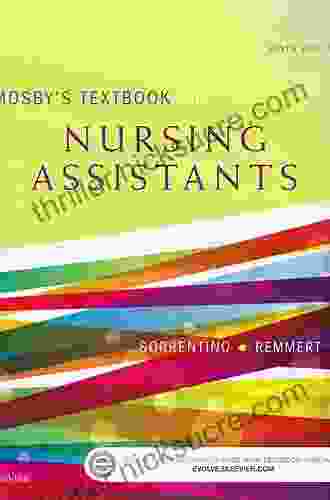
 Dashawn HayesMosby's Textbook for Nursing Assistants: A Comprehensive Guide to Essential...
Dashawn HayesMosby's Textbook for Nursing Assistants: A Comprehensive Guide to Essential... Mike HayesFollow ·6.7k
Mike HayesFollow ·6.7k Frank ButlerFollow ·17.7k
Frank ButlerFollow ·17.7k Forrest ReedFollow ·14.4k
Forrest ReedFollow ·14.4k Charlie ScottFollow ·15.3k
Charlie ScottFollow ·15.3k Jayden CoxFollow ·13.2k
Jayden CoxFollow ·13.2k Jermaine PowellFollow ·19.8k
Jermaine PowellFollow ·19.8k Jeff FosterFollow ·10.1k
Jeff FosterFollow ·10.1k Todd TurnerFollow ·19.6k
Todd TurnerFollow ·19.6k

 Guillermo Blair
Guillermo Blair2nd Edition Revised And Expanded 2024: A Comprehensive...
The 2nd Edition Revised...
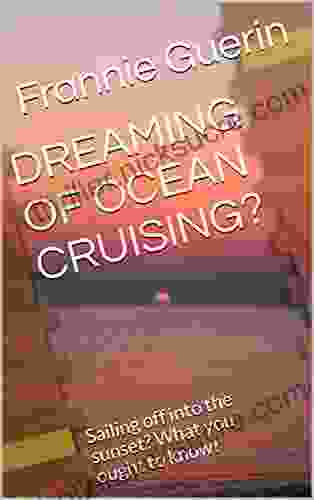
 Ronald Simmons
Ronald SimmonsDreaming of Ocean Cruising: A Voyage into Tranquility and...
For those seeking a respite from the mundane...

 Darren Nelson
Darren Nelson100 Nursing Practice Questions with Rationales to...
The NCLEX exam is a challenging but...

 Rex Hayes
Rex HayesMastering Bodyweight Training for Martial Arts: A...
For martial...
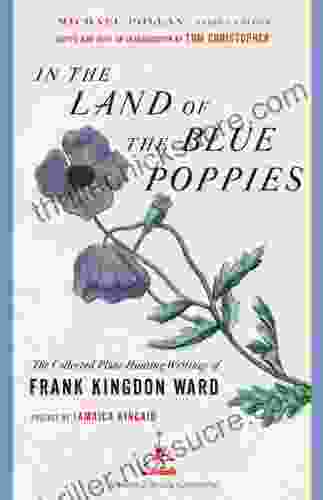
 Dillon Hayes
Dillon HayesIn The Land Of The Blue Poppies: A Literary Journey to...
Prologue: A Tapestry of...

 Eliot Foster
Eliot FosterCollege University Writing Super Review Flash Card Books:...
College University...
4.4 out of 5
| Language | : | English |
| File size | : | 1430 KB |
| Text-to-Speech | : | Enabled |
| Screen Reader | : | Supported |
| Enhanced typesetting | : | Enabled |
| X-Ray | : | Enabled |
| Word Wise | : | Enabled |
| Print length | : | 249 pages |


